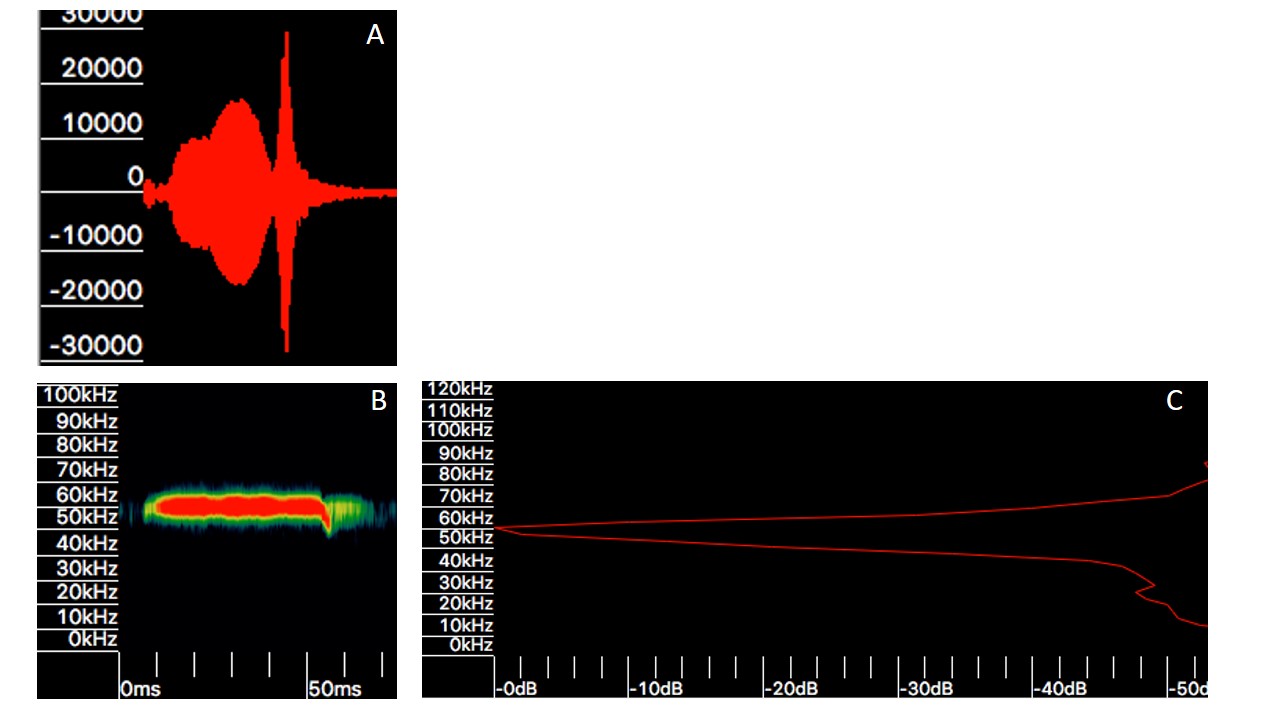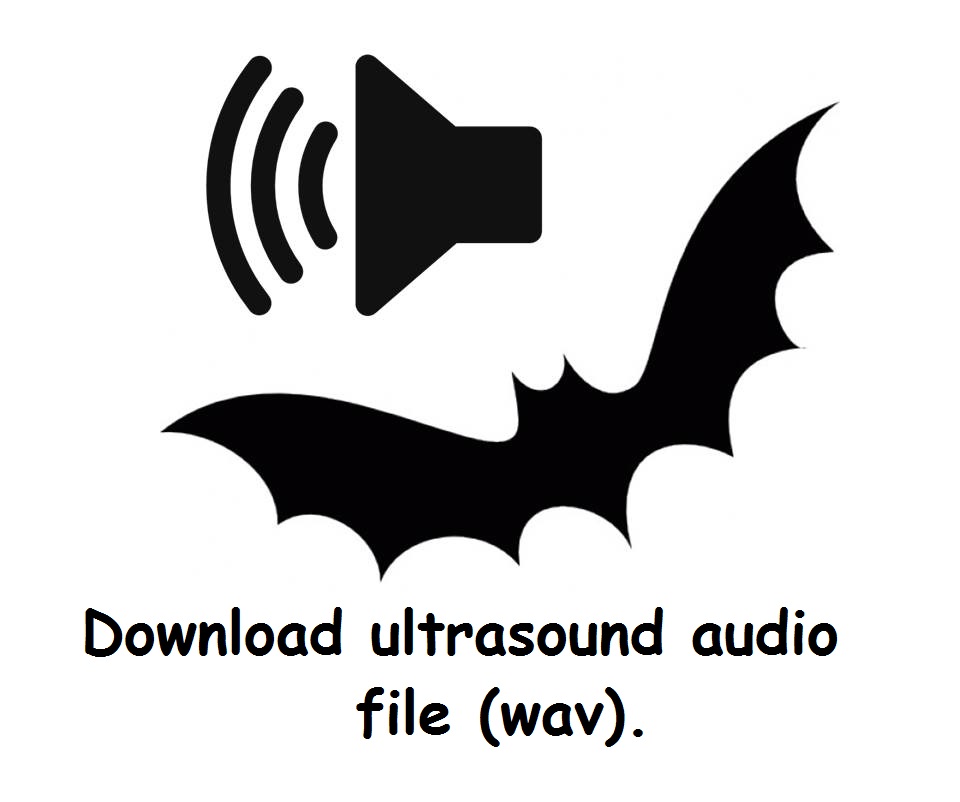Languages
Pteronotus alitonus
Pteronotus alitonus is a medium-sized bat in the Mormoopidae family, measuring 5.8 to 6.4 cm and weighing between 20 and 26 g. It is easily confused with P. rubiginosus, for which characteristics of the skull and dentition should be seen in detail (Pavan et al., 2018). The coat is dense and short (6 mm), ranging from light brown and dark brown to reddish.
Little is known about their preferred foraging habitat, but they probably live in dense areas of vegetation since there are no records of occurrences in savannas and karst areas of the Amazon.
Pteronotus alitonus` call is a long constant frequency (CF) followed by a short terminal modulated frequency down (CF-FM signal). The mean maximum energy frequency (FME) is 59 kHz, which is easily distinguished from the average frequency of 55kHz emitted by P. rubiginosus.
It occurs more in the primary forests of Guyana, Suriname, French Guiana and the Brazilian Amazon.
Figure 1. Echolocation call of Pteronotus alitonus. A) Oscillogram of acoustic pulses; B) Spectrogram of a sequence of calls; C) Intensity spectrogram. (Click figure to enlarge)





